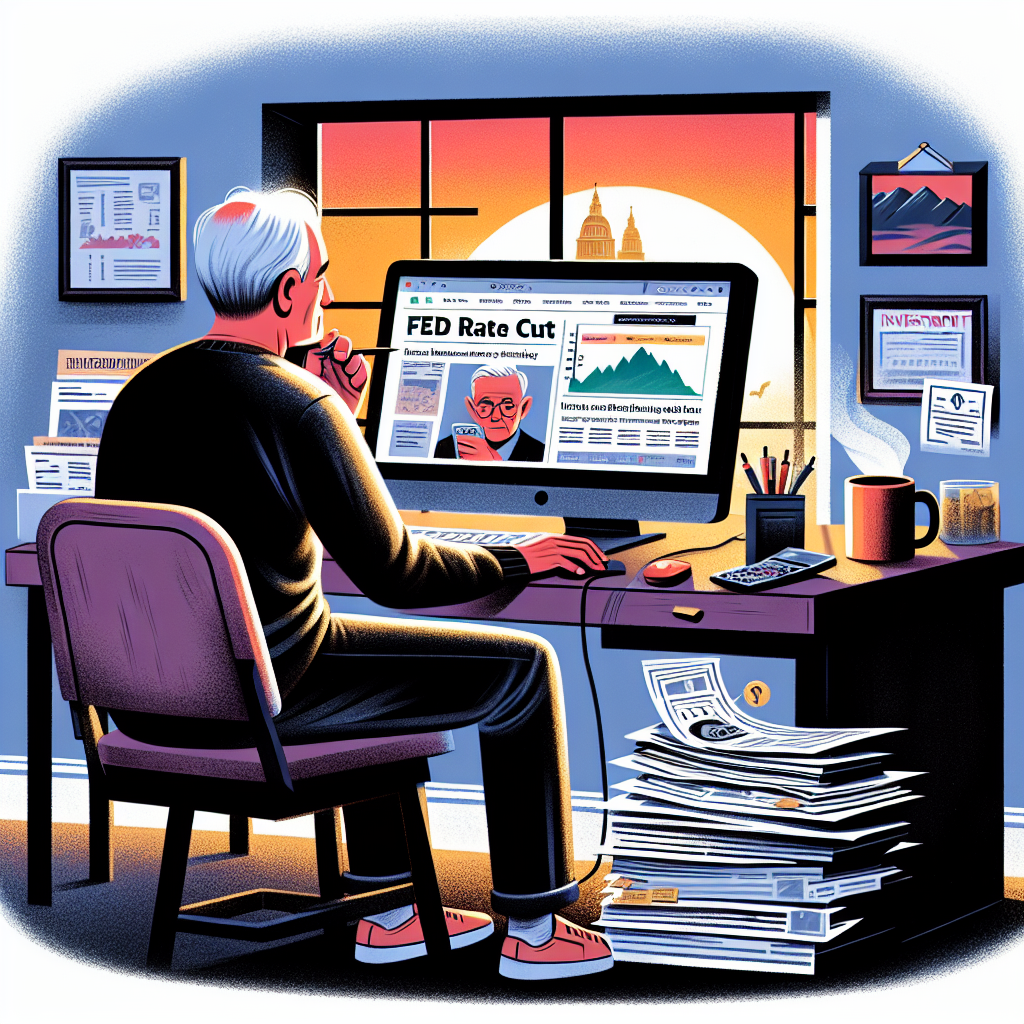What Does the Fed Rate Cut Mean for Your Retirement Savings?
As you approach retirement, you might notice some changes in the financial landscape, particularly when interest rates fluctuate. Recently, the Federal Reserve announced a rate cut, and this can have significant implications for your retirement plans. Let’s break down what a Fed rate cut is and what it means for you as you near retirement.
Understanding the Fed Rate Cut
The Federal Reserve, often referred to as the Fed, is the central bank of the United States. One of its primary roles is to manage the nation’s monetary policy, which includes setting interest rates. A rate cut means that the Fed is reducing the interest rates it charges banks, which usually leads to lower borrowing costs for everyone.
Why does this matter to you? Because changes in interest rates can affect everything from how much you earn in your savings account to the costs of loans and mortgages.
How a Fed Rate Cut Affects Retirement Savings
When the Fed cuts rates, this typically leads to lower yields on savings accounts, certificates of deposit (CDs), and bonds. If most of your retirement savings are in low-risk investments, you might feel the pinch. Here’s a look at how a rate cut can impact your financial future:
1. Lower Interest Rates on Savings Accounts and CDs
One of the immediate effects of a rate cut is lower interest rates on traditional savings accounts and CDs. For retirees who rely on interest income to supplement their Social Security or pension payments, this can be concerning. It means you’ll earn less on your savings, which could affect your cash flow during retirement.
What to Do: Consider looking at high-yield savings accounts or alternative investment options that might provide better returns. The digital banking landscape has grown, offering competitive rates without needing to maintain a brick-and-mortar branch.
2. Impact on Fixed-Income Investments
Many retirees invest in bonds and other fixed-income assets. A Fed rate cut generally results in lower yields for these securities as well. This means that if you’re holding bonds that are maturing, you may have to reinvest at lower rates, which translates to reduced income from your investments.
What to Do: Keep an eye on bond durations and consider diversifying your portfolio. Look for funds that invest in bonds with varying maturities or explore real estate investment trusts (REITs), which can offer potential growth.
3. Borrowing Costs Decrease
On a more positive note, a rate cut often leads to lower borrowing costs. If you’ve been thinking about taking out a loan to buy a new home or refinancing your existing mortgage, now is an excellent time. Lower interest rates mean lower monthly payments, which can free up cash for other expenses or investments.
What to Do: If refinancing makes sense for your budget, consider consulting with a financial advisor or mortgage professional to see how you can benefit.
4. Stock Market Reactions
Historically, when the Fed cuts rates, the stock market can react positively. Investors may flock to stocks, chasing higher returns as bond yields decline. For those of you with a portion of your retirement savings in stocks, this could be good news, as an uptick in the stock market often boosts your investment value.
What to Do: If you’re invested in the stock market, remain calm. It’s vital to have a long-term investment strategy rather than make hasty decisions in response to short-term market movements.
Planning for a Secure Retirement in a Low-Rate Environment
While a Fed rate cut can pose challenges for retirees, it also presents opportunities. Here are some steps you can take to navigate this environment:
1. Reassess Your Investment Strategy
It’s a good idea to review your investment portfolio regularly, especially as you approach retirement. Determine how much risk you’re comfortable taking and whether your asset allocation needs to change.
2. Consider Sustainable Withdrawals
If you’re worried about earning less on your savings, consider reviewing how much you withdraw from your accounts each year. The 4% rule is a common guideline; however, every retiree’s situation is unique. Adjusting your withdrawal rate can help you make your savings last longer.
3. Stay Informed
Financial news changes rapidly, and staying updated on interest rates can help you make informed decisions. Whether through financial newsletters, forums, or reliable websites like Stock Pulsar, keep learning about how economic changes might affect your retirement.
4. Consult a Financial Advisor
If you’re feeling overwhelmed, don’t hesitate to reach out to a financial advisor. They can offer personalized advice that aligns with your individual financial needs and retirement goals.
5. Maintain an Emergency Fund
Lastly, ensure you have an emergency fund set aside. Having 3 to 6 months’ worth of living expenses in an easily accessible account can provide peace of mind during economic shifts.
Conclusion
A Fed rate cut can bring both challenges and opportunities to your retirement planning. Understanding these dynamics means you can take proactive steps in managing your investments and enjoying a secure retirement. Stay informed, stay flexible, and don’t hesitate to reach out for professional guidance when needed. Your retirement years should be all about enjoying life — not worrying about finances.



